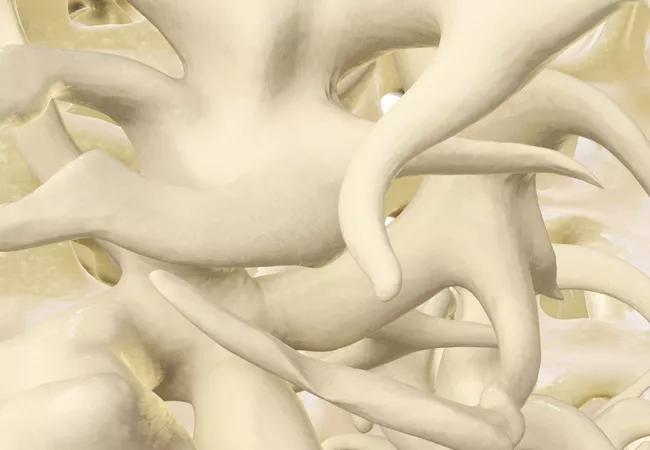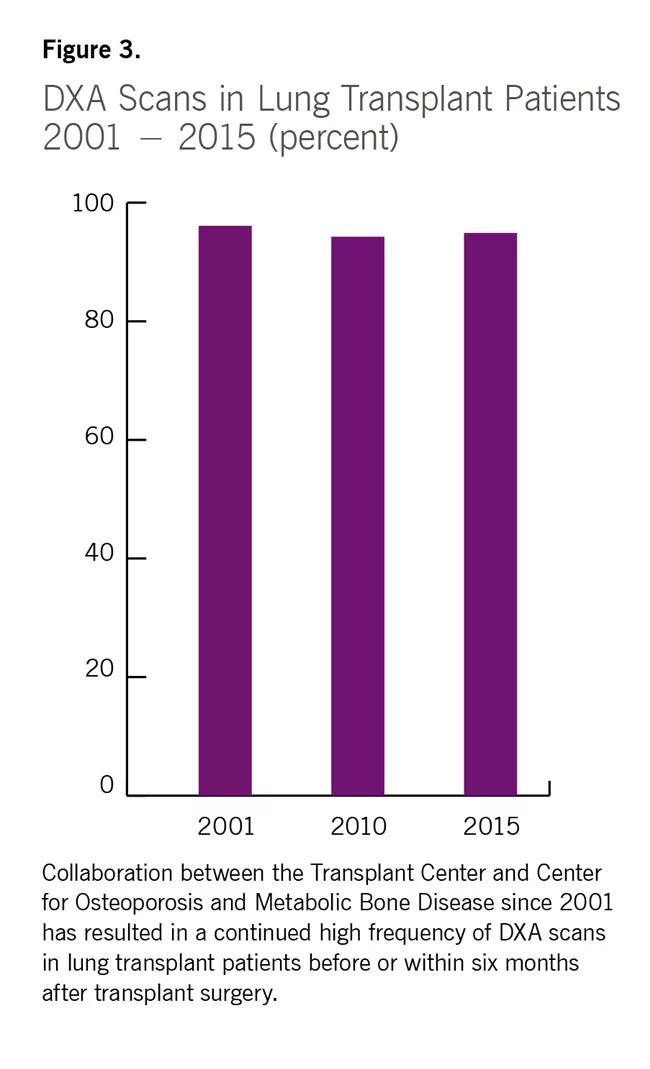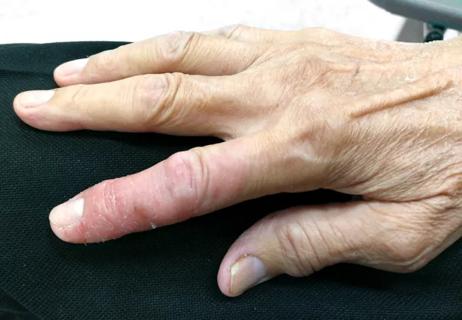Advertisement
Transplant patients face increased risk for osteoporosis

Advertisement
Cleveland Clinic is a non-profit academic medical center. Advertising on our site helps support our mission. We do not endorse non-Cleveland Clinic products or services. Policy
Transplantation is an increasingly successful and life-extending treatment modality for end-stage diseases. Newer antirejection medications offer improved survival, but with longevity comes additional comorbidities and complications, including osteoporosis. Cleveland Clinic’s protocol to assess and manage bone health in transplant candidates has significantly decreased the incidence of osteoporosis and improved the quality of life in this vulnerable population.
Osteoporosis and resulting fractures are frequent in patients after organ transplantation, with fracture rates as high as 37 percent reported in the first year, depending on the type of transplant and individual patients’ risk factors. It is tragic when a successful organ transplant improves a patient’s quality of life only to have a vertebral or hip fracture diminish that quality.
Factors contributing to reduced bone mass and fracture in transplant are varied, and include existing, pretransplant bone status as well as post-transplant therapeutic regimens.
Pretransplant: Some transplant patients have disease-specific factors that predispose them to osteoporosis prior to transplant, including bone loss resulting from debilitation, glucocorticoid (GC) use, decreased weight-bearing activity, poor absorption of calcium and vitamin D, and secondary hyperparathyroidism. For instance, patients with kidney disease often develop secondary hyperparathyroidism which increases bone resorption. Patients with liver disease commonly have vitamin D deficiency, resulting in elevated PTH levels and mineralization defects which may manifest as osteomalacia. Age, gender, activity level, smoking and other individual risk factors also impact bone density prior to transplant.
Advertisement
Post-transplant: The advent of new immunosuppressive agents that reduce organ rejection has been a boon to survival for transplant recipients. But some immunosuppressive agents can significantly reduce bone mass, and they do so most rapidly in the first six to 12 months following transplant, when they are administered in high doses. GCs decrease bone formation by causing osteoblast and osteocyte apoptosis. They also reduce intestinal calcium absorption and gonadal hormone levels in men and women. Calcineurin inhibitors may cause decline in renal function, which increases PTH levels, and can lead to secondary hyperparathyroidism and increased bone resorption. In addition, these agents may directly increase osteoclast activity and bone resorption. Figure 1 provides further detail about the effects of immunosuppressive medications on bone.

The evaluation and treatment of low bone mass in transplant patients is essential for quality outcomes. In 2002, the Center for Osteoporosis and Metabolic Bone Disease and the Transplant Center at Cleveland Clinic implemented a systematic approach to assess and manage bone health in all transplant candidates. Transplant physicians now refer patients to the program as part of the pre-transplant evaluation protocol.
Cleveland Clinic’s bone evaluation protocol for transplant patients involves administration of dual-energy X-ray absorptiometry (DXA), consultation in the Center for Osteoporosis and Metabolic Bone Disease when needed, and follow-up in our center post-transplant.
When we identify patients with low bone mineral density (BMD) and/or high fracture risk using the WHO FRAX® model prior to transplant, treatment may be initiated with available antiresorptive or anabolic agents, including bisphosphonates, denosumab or teriparatide. When high-dose GCs are initiated with transplantation, American College of Rheumatology guidelines are used to determine the need for osteoporosis therapy. These guidelines recommend treatment based on GC dose and FRAX® 10-year risk.
Repeat bone density testing is performed at one year post-transplant to evaluate therapeutic efficacy of the medication.
In 2001, fewer than 20 percent of our cardiac transplant patients underwent pretransplant osteoporosis evaluation. Currently, more than 90 percent are evaluated and treated when clinically indicated (Figure 2). The rate of evaluation and treatment for lung transplant patients is also over 90 percent (Figure 3). A total of more than 1,000 transplant patients have been evaluated and followed since the launch of this program.
Advertisement


Fortunately, researchers worldwide continue to investigate the pathophysiology of osteoporosis in the growing population of transplant recipients, with a focus on improving both prevention and treatment strategies. Several studies have demonstrated a steady decline in post-transplant fracture rates. With increasing awareness, and implementation of protocols similar to Cleveland Clinic’s at other major medical centers, we can help patients avoid this debilitating complication of transplantation.
Dr. Deal is Head of the Center for Osteoporosis and Metabolic Bone Disease in the Department of Rheumatic and Immunologic Diseases.
Advertisement
Advertisement

Husni Lab focuses on transforming management and treatment

E-coaching program is tailored for those with the disease

Sustained efficacy and safety

New long-term outcomes data offer insights

Evaluating PROs in immune-mediated diseases

A practical PRO biomarker databank

Distinguishing the cause of fevers in patients with lupus

Relationship in patients treated with pegloticase